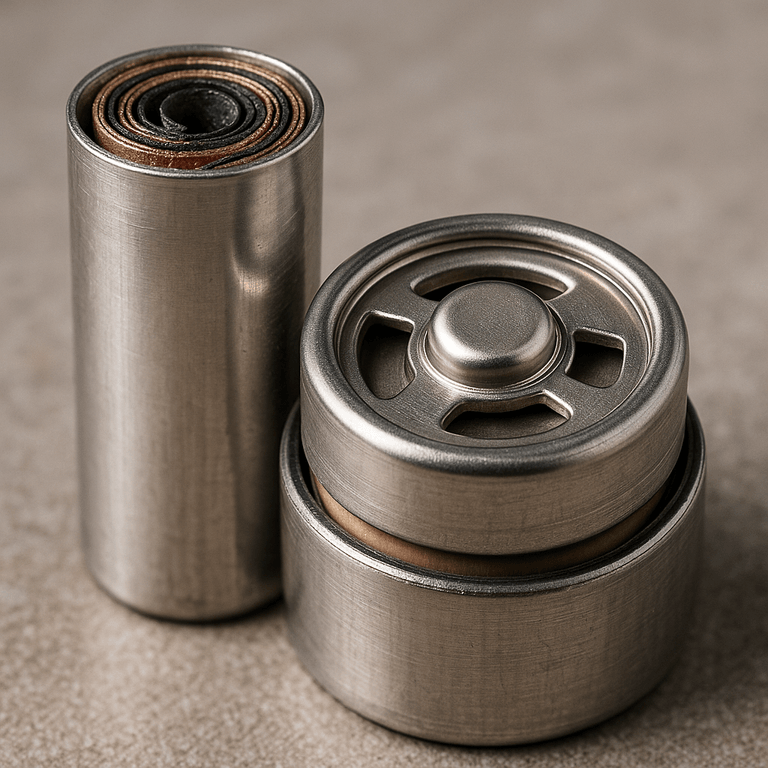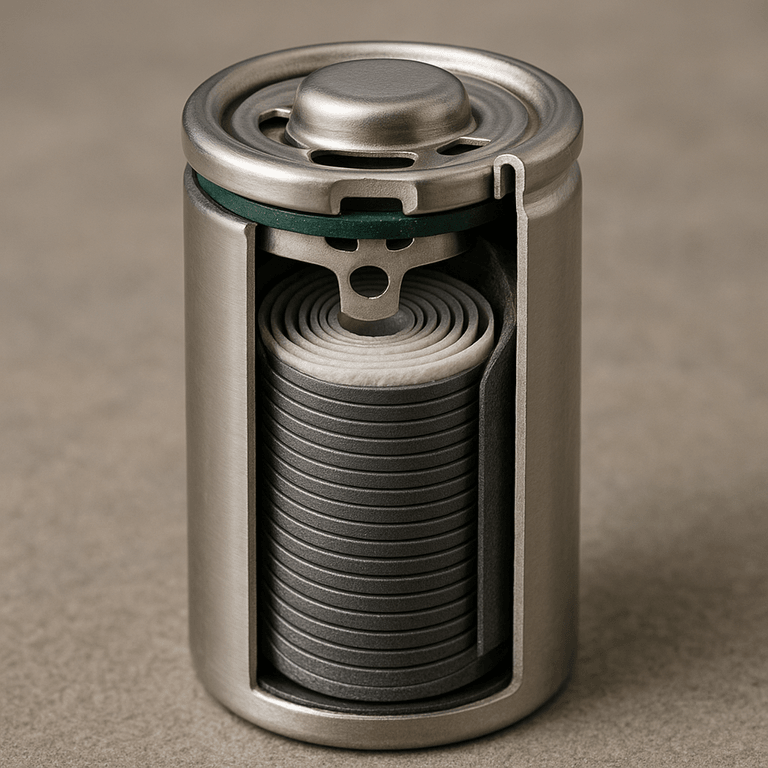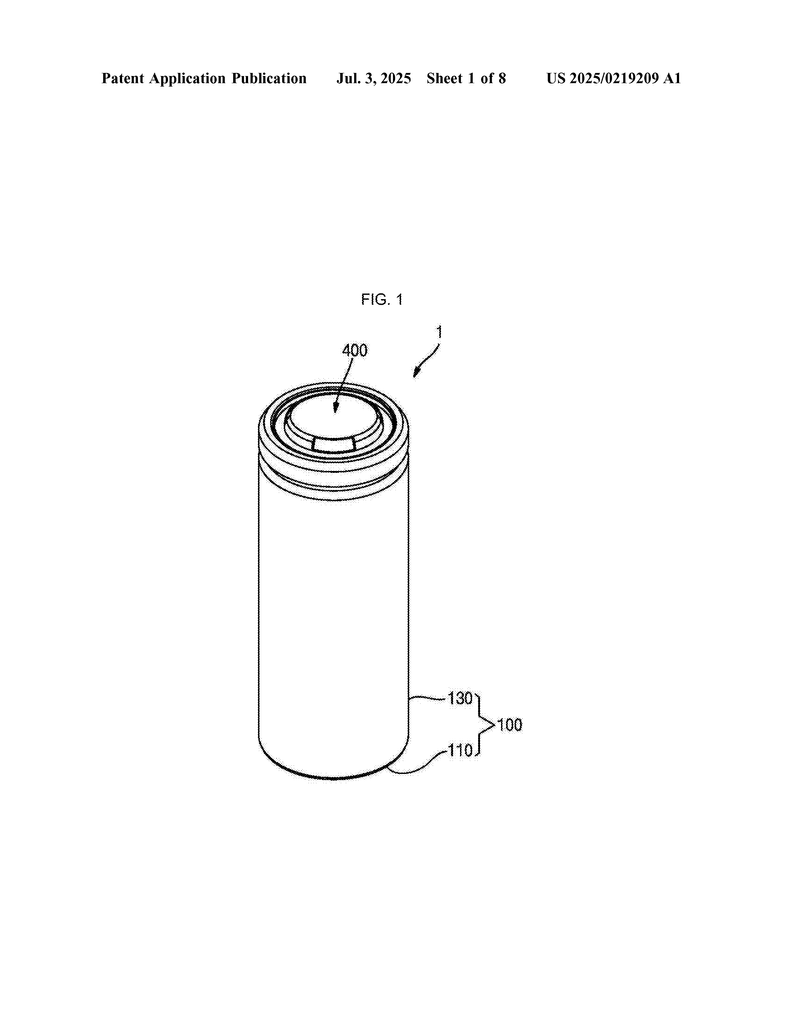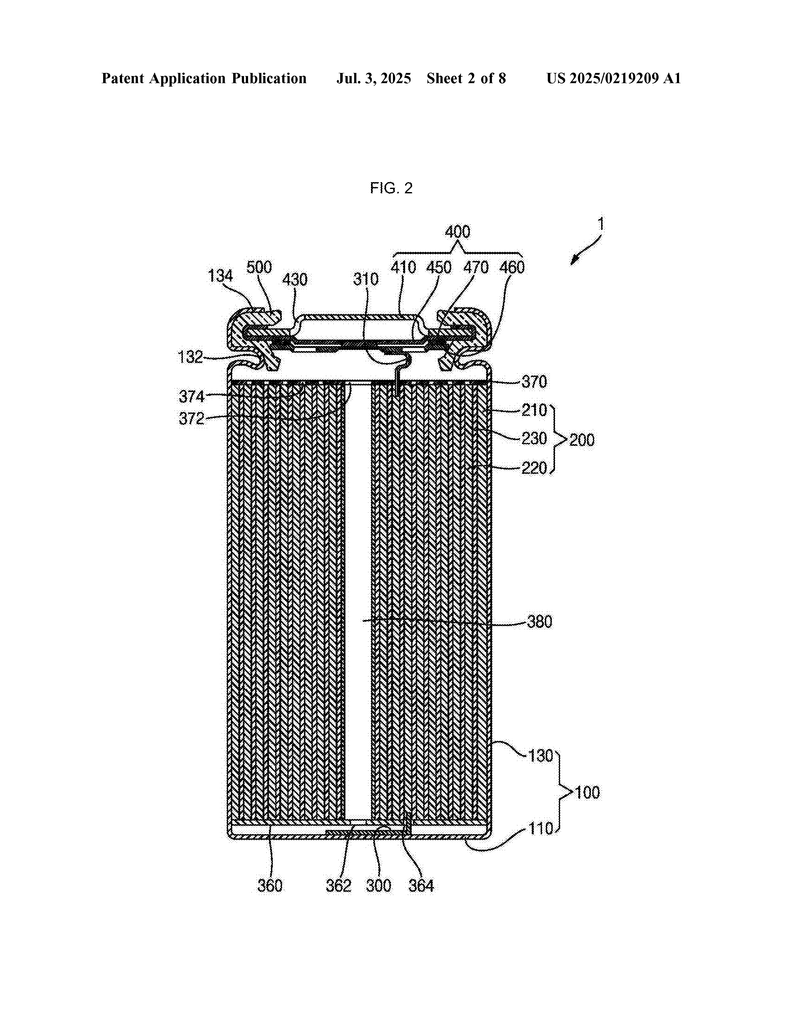Invented by KIM; Dae Kyu, SEO; Kwang Soo
Understanding batteries is important because they are everywhere today. The patent application we will explore focuses on a new structure for cylindrical secondary batteries, especially how the top part, called the cap assembly, is built. This article will help you understand why this invention matters, how it differs from older batteries, and what makes it special.
Background and Market Context
Batteries are a big part of our daily lives. We use them in phones, laptops, cars, and even in large buildings. As more people use electric cars and as renewable energy grows, the need for safe, powerful, and long-lasting batteries keeps going up. Cylindrical secondary batteries are a popular type because they are strong and pack a lot of power in a small space. These batteries are rechargeable and are used in many devices and vehicles.
But with more use comes more concern about safety. Sometimes, batteries get too hot, build up gas inside, or even catch fire. This is usually rare, but with so many batteries in the world, even a tiny risk can become a big problem. Battery makers and engineers are always looking for ways to make batteries safer, more reliable, and able to handle more power without danger.
The top part of a cylindrical battery, called the cap assembly, is very important for safety. It helps seal the battery and lets electricity flow out to power devices. But it also needs to let gas escape if something goes wrong inside. If gas cannot escape quickly, the battery can swell, burst, or even explode. So, the cap assembly must be strong but also designed to open or vent safely if needed.
This is where the invention in this patent comes in. It looks at how to make the cap assembly better at letting gas out safely while still being strong enough to last a long time. If the cap is too weak, it might open or bend too soon, even when nothing is wrong. If it is too strong, it might not open in time during an emergency. Finding the right balance is the key, and that is what the inventors are trying to solve.
In the battery market, companies compete not just on how much power their batteries hold, but also on safety. Better safety means fewer recalls, less risk of damage, and more trust from customers. If a new cap assembly can make batteries safer without making them bigger or heavier, it can be a big advantage.
That is why this new cap assembly design is important. It is about keeping up with the growing demand for better, safer, and smarter batteries. The market is moving fast, and inventions like this one help shape the future of energy storage.
Scientific Rationale and Prior Art
To really understand why this new cap assembly matters, let’s look at how battery caps worked before and what problems they had. Older batteries used simple metal caps to seal the battery and connect it to a device. These caps often had a small hole or vent that would open if the pressure inside the battery got too high. Sometimes, a thin piece of metal would break or bend when the pressure got too strong, letting the gas out.
This worked, but it was not perfect. If the vent was too small, gas could not escape fast enough, which could lead to dangerous swelling or even an explosion. If the vent was too big or the cap was too weak, it might open during normal use, letting out gas when it should not. Some designs used special plates called vent plates that would break at a certain pressure, but even these could block the gas path if the cap above them bent or shifted.
Researchers tried making vent holes bigger, but this sometimes made the cap too weak. They added extra supports or thicker metal, but then the cap was too strong and wouldn’t open fast enough in an emergency. Some designs used notches or grooves to help control where the cap would break, but it was still hard to get the balance right.
Another problem in old designs was that if the cap bent or was hit from the outside, it might close off the vent hole. This could block the gas path, making the battery even more dangerous. Sometimes, the pressure inside the battery would build up without any way to escape, causing the battery to burst in an uncontrolled way.
So, in summary, the old battery caps had these main problems:
– Vents that were too small or blocked easily
– Caps that were either too strong or too weak
– Caps that could bend or break in the wrong place
– Hard to control exactly when and how the cap would open
The science behind battery safety is all about controlling these risks. Gas needs a clear path to escape, but only if there is real danger. The cap must be strong enough for normal use, but not so strong that it can’t open during an emergency. Engineers use ideas from physics and materials science to design these parts, looking at things like stress, pressure, and how metal bends or breaks.
Before this invention, there were some patents and products that tried to solve these issues. Some used multiple layers in the cap, with special vent plates, notches, or thin spots made to break at a set pressure. Others tried to make the vent path wider or added flexible seals. But many of these still had problems with blocked vents or caps that did not open at the right time.
This new patent builds on that science, using better shapes and sizes for the parts of the cap. By changing the way the metal bridges inside the cap are formed, and by carefully choosing their width and where they are connected, the inventors hope to get just the right balance between strength and safety. This is a step forward from the older designs, using careful measurement and testing to guide the improvements.
Invention Description and Key Innovations
Now let’s get into what makes this new battery cap assembly different and better. The invention is focused on the part of the battery called the cap-up, which sits at the top and is exposed to the outside. It is made up of three main parts: a terminal portion (the center, where electricity flows out), a base portion (a ring around the outer edge), and several bridge parts that connect the center to the base. Between each bridge is a hole called a connection hole, which acts as a vent for gas.
The most important feature is how these bridge parts are shaped. Each bridge is wider where it connects to the base part and narrower where it connects to the terminal part. In the middle, the bridge is at its narrowest. This careful shaping is not just for looks – it is based on lots of testing and helps control how and when the bridge will break if there is too much pressure inside the battery.
Here’s how it works in simple terms. Under normal use, the bridges are strong enough to hold the cap together. But if the pressure from gas inside the battery gets too high, the bridges are designed to break at the narrowest part, opening up the vent holes wider and letting gas escape quickly. This helps prevent the battery from exploding or swelling dangerously.
The patent even describes a way to measure and adjust the width of the bridges. It gives special names to the widths: upper width (where the bridge connects to the center), lower width (where it connects to the base), and center width (the narrowest point in the middle). The inventors found that by keeping the center width at about 52% to 68% of the lower width, they get the best balance between strength and the ability to break open when needed. If the center is too narrow, the bridge breaks too easily; if it is too wide, it might not break at all.
Another smart feature is the use of grooves on the sides of each bridge, called concave grooves. These grooves help direct where the bridge will break and also make it easier for gas to flow through the vent holes. The shape and curve of these grooves can be changed to fine-tune how strong the bridge is and how easily it breaks.
The cap assembly is built with several layers. Below the cap-up is a vent plate, which has its own notches designed to break at a certain pressure. Below that is a cap-down plate, which adds extra strength and helps keep the cap from bending during normal use. There is also a gasket (made of an insulating material) that prevents electricity from leaking from the cap to the battery can, and an insulator to keep the vent plate and cap-down separate except at a contact point.
These layers work together to make sure the battery is safe. Under normal use, the cap is sealed tightly, with the vent holes ready to open if needed. If there is an emergency, like too much pressure from gas inside, the vent plate breaks open first, then the bridges in the cap-up break at their weakest point, and the gas escapes safely through the holes. The rest of the cap stays strong enough not to bend or block the holes, so the vent path remains clear.
Another clever detail is that the bridge parts are spaced evenly around the cap, so the stress is spread out and the cap is less likely to bend or twist if pushed from the outside. This helps keep the vent holes open and makes the battery more reliable.
Finally, the patent allows for the sizes and shapes of all these parts to be changed for different types of batteries or uses. By measuring the widths and curvatures, engineers can make the cap assembly just right for small batteries (like in gadgets) or big ones (like in electric cars).
In short, the key innovations are:
– Shaped bridges with different widths to control breaking
– Side grooves that guide breaking and help vent gas
– Careful measurement and testing to find the safest sizes
– Multiple layers for strength and safety
– Designs that keep the vent path open, even if the cap is pushed from outside
– Adjustable features for use in many types of batteries
All these details work together to make a battery cap that is safer, stronger, and more reliable. This is not just theory – it is built on careful testing, real measurements, and a deep understanding of how batteries behave in both normal use and emergencies.
Conclusion
This new cylindrical secondary battery cap assembly shows how small changes in design can make a big difference in safety and performance. By carefully shaping the bridges in the cap, adding grooves, and choosing the right sizes, the inventors have created a cap that keeps batteries strong and safe. It is a smart answer to real problems faced by battery makers, users, and anyone concerned about energy storage safety.
For battery makers and engineers, this invention offers a clear path to better, safer products. For users, it means more reliable devices, cars, and energy systems. For everyone, it is a good example of how science and careful design come together to solve important challenges in our modern world.
As the battery market keeps growing, inventions like this one will help set new standards for safety and reliability. If you work with batteries or just use them every day, this is the kind of progress that makes the future brighter and safer for all.
Click here https://ppubs.uspto.gov/pubwebapp/ and search 20250219209.




